Davide
Addicted to Fun and Learning
Dear users,
I state that my system is the one in the signature.
I've recently been struggling a bit with Dirac Live due to some issues related to it. I discovered that when measuring at high sample rates the IR it detected was completely wrong, although it sounded satisfactory.
Taking measurements with REW I actually detected some anomalies, so I repeated everything at 44khz.
I also found that the asymmetry in the measurements causes a slight but perceptible difference towards the high frequencies, as Dirac compensates the gain based on these calculations. In fact, at large angles the correction should be limited in band, but since I needed to equalize I preferred to use the Dirac filter directly.
Anyway, I'm quite happy with the result. With the new measurement there is definitely more focus, so Dirac is doing his thing now.
There remain some aspects to improve, such as cancellations between 100 and 200hz, curious GD peaks and also a high GD in the subwoofers, but also high RT60 above 300hz.
Unfortunately I am limited in terms of speaker positioning, this is their definitive position, and in terms of treatment of the room I wouldn't know what to do without obtaining the dissent of my wife and son.
I am attaching a photo of the room (the subs are hidden in the TV cabinet and the door is a grid with a fine wood effect film applied).
I'm attaching some measurements.
Tell me yours!
Thank you
PS. I can't evaluate the IACC calculation... what do you think it is?
I state that my system is the one in the signature.
I've recently been struggling a bit with Dirac Live due to some issues related to it. I discovered that when measuring at high sample rates the IR it detected was completely wrong, although it sounded satisfactory.
Taking measurements with REW I actually detected some anomalies, so I repeated everything at 44khz.
I also found that the asymmetry in the measurements causes a slight but perceptible difference towards the high frequencies, as Dirac compensates the gain based on these calculations. In fact, at large angles the correction should be limited in band, but since I needed to equalize I preferred to use the Dirac filter directly.
Anyway, I'm quite happy with the result. With the new measurement there is definitely more focus, so Dirac is doing his thing now.
There remain some aspects to improve, such as cancellations between 100 and 200hz, curious GD peaks and also a high GD in the subwoofers, but also high RT60 above 300hz.
Unfortunately I am limited in terms of speaker positioning, this is their definitive position, and in terms of treatment of the room I wouldn't know what to do without obtaining the dissent of my wife and son.
I am attaching a photo of the room (the subs are hidden in the TV cabinet and the door is a grid with a fine wood effect film applied).
I'm attaching some measurements.
Tell me yours!
Thank you
PS. I can't evaluate the IACC calculation... what do you think it is?
Attachments
-
 meas_clarity.jpg245 KB · Views: 313
meas_clarity.jpg245 KB · Views: 313 -
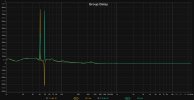 meas_gd.jpg267.8 KB · Views: 255
meas_gd.jpg267.8 KB · Views: 255 -
 meas_IACC.png56.7 KB · Views: 237
meas_IACC.png56.7 KB · Views: 237 -
 meas_phase.jpg279.3 KB · Views: 230
meas_phase.jpg279.3 KB · Views: 230 -
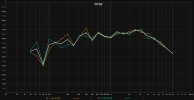 meas_rt60.jpg278.7 KB · Views: 220
meas_rt60.jpg278.7 KB · Views: 220 -
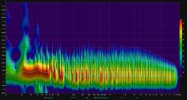 meas_spectR.jpg305.7 KB · Views: 225
meas_spectR.jpg305.7 KB · Views: 225 -
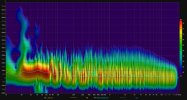 meas_spectL.jpg304.2 KB · Views: 221
meas_spectL.jpg304.2 KB · Views: 221 -
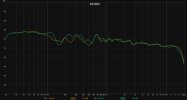 meas_spl.jpg217.4 KB · Views: 226
meas_spl.jpg217.4 KB · Views: 226 -
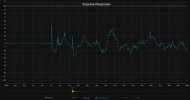 meas_stepL.jpg244.3 KB · Views: 214
meas_stepL.jpg244.3 KB · Views: 214 -
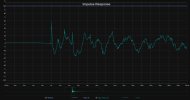 meas_stepR.jpg244.5 KB · Views: 235
meas_stepR.jpg244.5 KB · Views: 235 -
 PXL_20240418_133342824~2.jpg497.1 KB · Views: 290
PXL_20240418_133342824~2.jpg497.1 KB · Views: 290 -
 PXL_20240418_132944895~2.jpg424.3 KB · Views: 309
PXL_20240418_132944895~2.jpg424.3 KB · Views: 309
Last edited:

